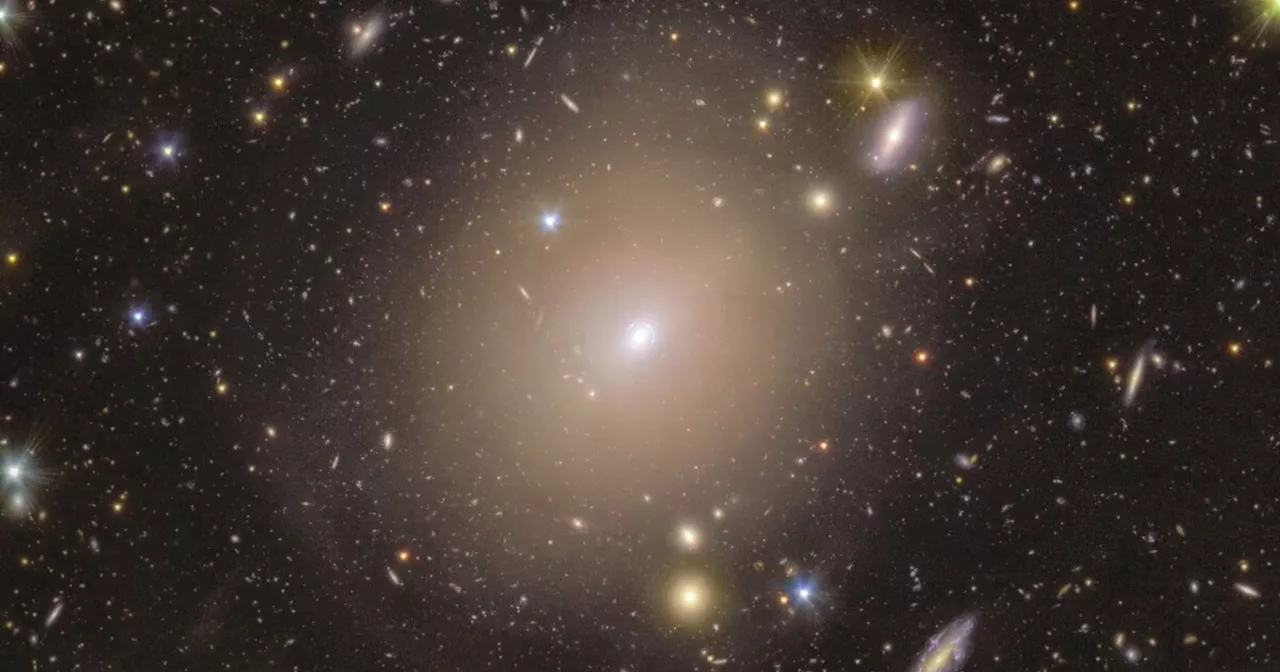The European Space Agency's Euclid telescope has captured a stunning image of an Einstein Ring, a ring of light surrounding a galaxy billions of light-years away, offering new insights into gravity and the universe.
A ring of light surrounding the center of NGC 6505, a nearby galaxy, has been captured by the European Space Agency's Euclid telescope. This rare discovery, announced on Monday, marks a significant find for the space telescope, which is on a six-year mission to map the cosmos by observing billions of galaxies. The image reveals a bright ball of light at the center, encircled by a luminous, cloudy ring.
This ring, an Einstein Ring, is a gravitational lensing effect caused by the alignment of NGC 6505 with another, unnamed galaxy positioned 4.42 billion light-years away. This Einstein Ring was previously invisible due to the brightness of NGC 6505, but Euclid's high resolution and sensitivity have allowed astronomers to detect it. Named after Albert Einstein, who predicted the bending of light through his theory of relativity, Einstein Rings are a testament to the power of gravity. They occur when light from a distant galaxy bends around a massive object, like another galaxy or cluster of galaxies, creating a ring-like distortion when observed from Earth. The alignment that creates this specific Einstein Ring is expected to persist for some time, providing astronomers with valuable opportunities to study both NGC 6505 and the lensing galaxy. Euclid's observations are expected to contribute significantly to our understanding of dark matter, the invisible substance that exerts gravitational influence throughout the universe. However, the potential for discovery extends beyond dark matter. Astronomers like McCleary hope that this and future observations will unveil even more dramatic cosmic phenomena, offering a deeper understanding of the universe's history and evolution. This discovery highlights the transformative potential of advanced space telescopes like Euclid, pushing the boundaries of our knowledge about the cosmos
ALBERT EINSTEIN ASTRONOMY DARK MATTER EINSTEIN RING EUCLID TELESCOPE GALAXIES GRAVITATIONAL LENSING SPACE EXPLORATION UNIVERSE
United States Latest News, United States Headlines
Similar News:You can also read news stories similar to this one that we have collected from other news sources.
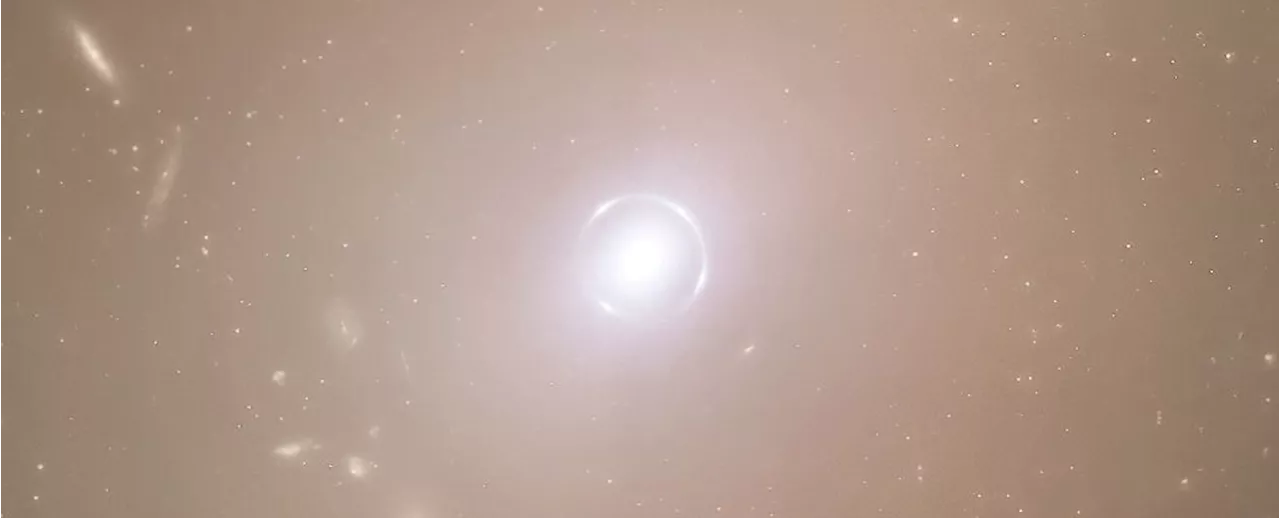 Rare Einstein Ring Discovered Around Galaxy by Euclid TelescopeAstronomers using the Euclid space telescope have observed a perfect ring of light, known as an Einstein ring, surrounding a galaxy named NGC 6505. This rare phenomenon occurs when the gravity of a massive object, like NGC 6505, bends the light from a more distant galaxy, creating a ring-like structure. The discovery offers scientists a unique opportunity to study the distant galaxy in greater detail.
Rare Einstein Ring Discovered Around Galaxy by Euclid TelescopeAstronomers using the Euclid space telescope have observed a perfect ring of light, known as an Einstein ring, surrounding a galaxy named NGC 6505. This rare phenomenon occurs when the gravity of a massive object, like NGC 6505, bends the light from a more distant galaxy, creating a ring-like structure. The discovery offers scientists a unique opportunity to study the distant galaxy in greater detail.
Read more »
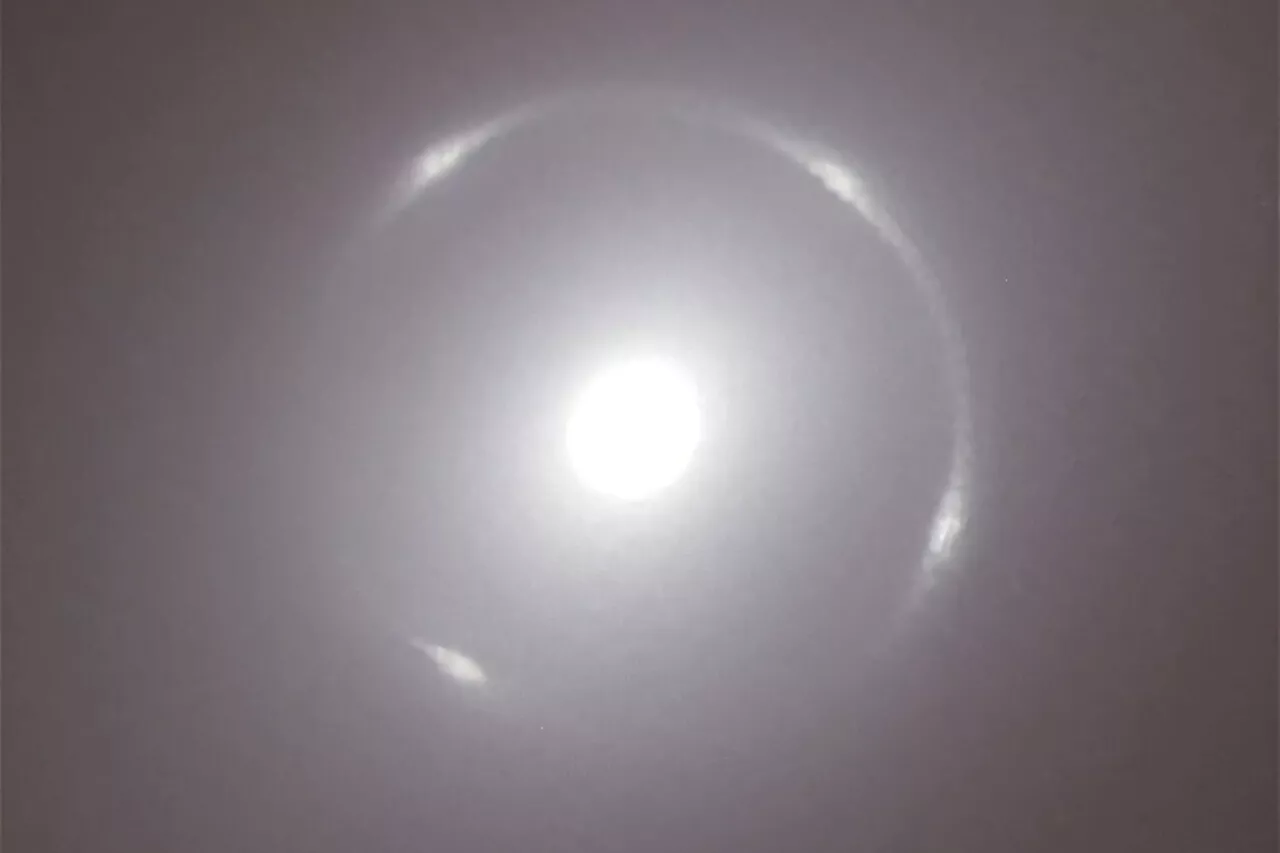 Euclid Telescope Captures Stunning Einstein Ring in Early Test ImageThe Euclid Space Telescope has captured a breathtaking image of an Einstein Ring - a rare phenomenon where light from a distant galaxy is bent into a perfect circle by the gravity of a foreground galaxy. This image, taken just 24 hours after the telescope's initial observations, demonstrates Euclid's impressive capabilities and promises exciting discoveries in the future.
Euclid Telescope Captures Stunning Einstein Ring in Early Test ImageThe Euclid Space Telescope has captured a breathtaking image of an Einstein Ring - a rare phenomenon where light from a distant galaxy is bent into a perfect circle by the gravity of a foreground galaxy. This image, taken just 24 hours after the telescope's initial observations, demonstrates Euclid's impressive capabilities and promises exciting discoveries in the future.
Read more »
 Euclid Telescope Discovers Stunning Einstein Ring in Nearby GalaxyThe Euclid space telescope, launched in 2023 to explore the dark Universe, has captured an incredibly detailed image of an Einstein Ring. This rare phenomenon, predicted by Albert Einstein's theory of relativity, occurs when the gravity of a foreground galaxy bends the light from a background galaxy, creating a ring of light. The discovery, made during Euclid's early testing phase, highlights the telescope's remarkable capabilities and its potential to uncover many more hidden secrets about the Universe.
Euclid Telescope Discovers Stunning Einstein Ring in Nearby GalaxyThe Euclid space telescope, launched in 2023 to explore the dark Universe, has captured an incredibly detailed image of an Einstein Ring. This rare phenomenon, predicted by Albert Einstein's theory of relativity, occurs when the gravity of a foreground galaxy bends the light from a background galaxy, creating a ring of light. The discovery, made during Euclid's early testing phase, highlights the telescope's remarkable capabilities and its potential to uncover many more hidden secrets about the Universe.
Read more »
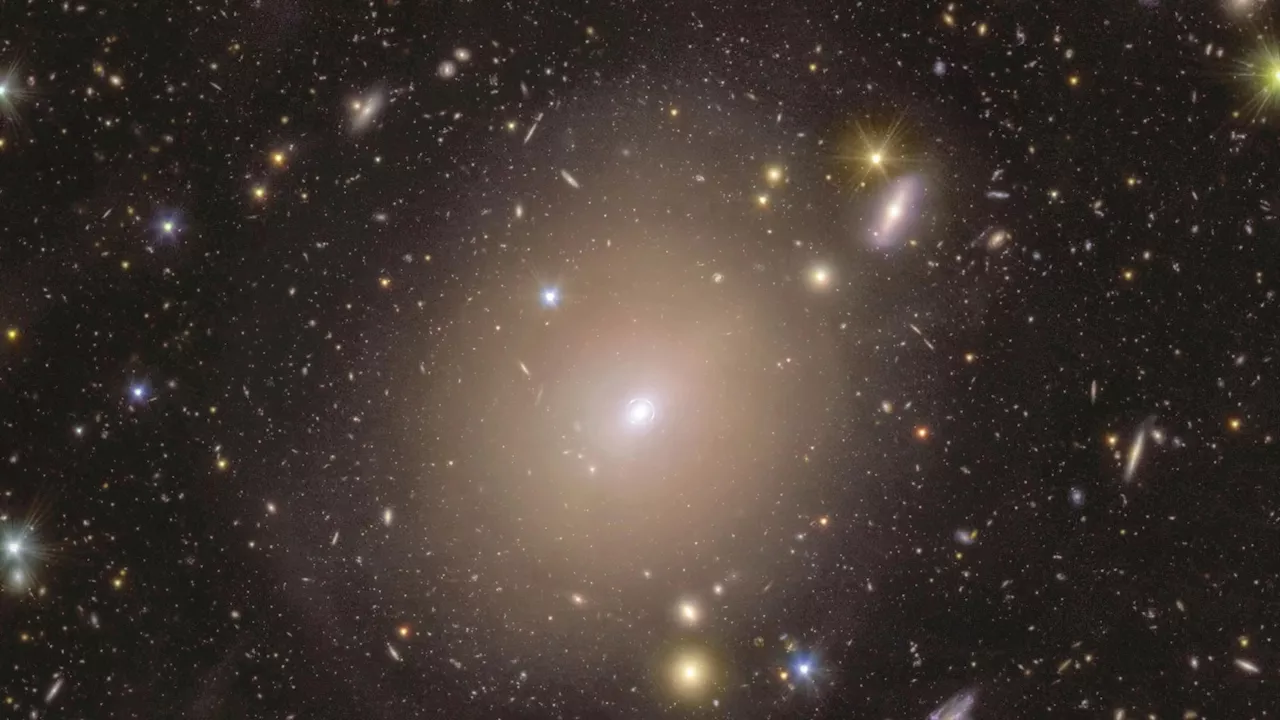 Einstein Ring Spotted Surrounding Distant Galaxy by Euclid TelescopeThe European Space Agency's Euclid telescope has captured an image of an Einstein ring - a bright halo of light surrounding a galaxy 590 million light-years away. This rare phenomenon occurs when the gravity of a closer galaxy distorts the light from a much more distant galaxy, creating a ring-like effect. The discovery, reported in the journal Astronomy and Astrophysics, provides valuable insights into dark energy and dark matter.
Einstein Ring Spotted Surrounding Distant Galaxy by Euclid TelescopeThe European Space Agency's Euclid telescope has captured an image of an Einstein ring - a bright halo of light surrounding a galaxy 590 million light-years away. This rare phenomenon occurs when the gravity of a closer galaxy distorts the light from a much more distant galaxy, creating a ring-like effect. The discovery, reported in the journal Astronomy and Astrophysics, provides valuable insights into dark energy and dark matter.
Read more »
 Euclid Telescope Spots Rare 'Einstein Ring' Around Nearby GalaxyThe European Space Agency's Euclid space telescope has made a remarkable discovery, detecting a rare 'Einstein ring'—a luminous halo surrounding a distant galaxy—providing valuable insights into the nature of gravity and the universe. This finding, published in the journal Astronomy and Astrophysics, showcases the telescope's capabilities and its mission to unravel the mysteries of dark energy and dark matter.
Euclid Telescope Spots Rare 'Einstein Ring' Around Nearby GalaxyThe European Space Agency's Euclid space telescope has made a remarkable discovery, detecting a rare 'Einstein ring'—a luminous halo surrounding a distant galaxy—providing valuable insights into the nature of gravity and the universe. This finding, published in the journal Astronomy and Astrophysics, showcases the telescope's capabilities and its mission to unravel the mysteries of dark energy and dark matter.
Read more »
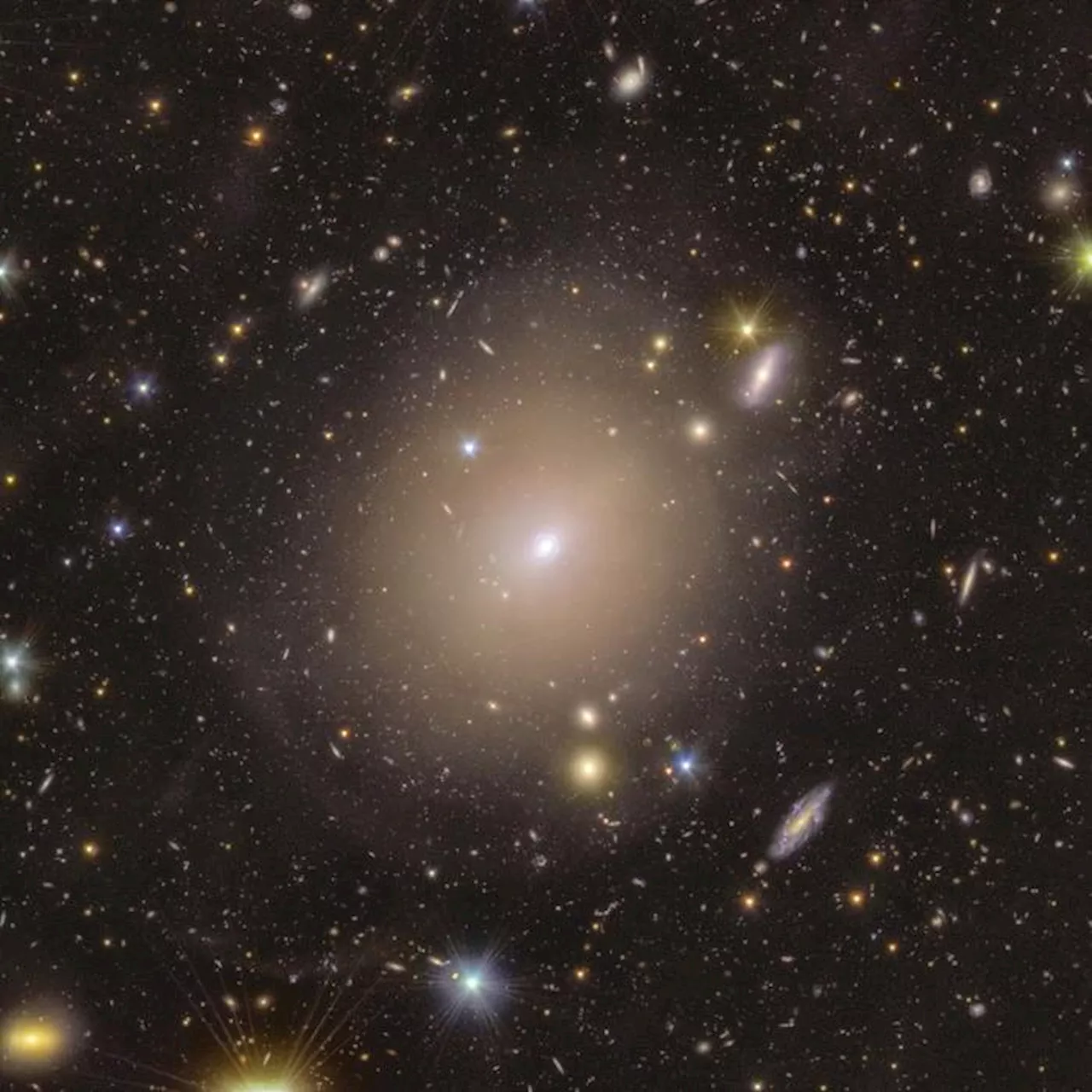 Euclid Telescope Captures Stunning Einstein RingThe European Space Agency's Euclid telescope has captured an unexpected and remarkable image of an Einstein ring. This phenomenon, predicted by Einstein's theory of relativity, occurs when the gravity of a foreground galaxy bends and magnifies the light from a background galaxy, creating a ring-like structure. The image showcases the ring surrounding the nucleus of the galaxy NGC 6505, with colourful foreground stars and background galaxies adding to the spectacle.
Euclid Telescope Captures Stunning Einstein RingThe European Space Agency's Euclid telescope has captured an unexpected and remarkable image of an Einstein ring. This phenomenon, predicted by Einstein's theory of relativity, occurs when the gravity of a foreground galaxy bends and magnifies the light from a background galaxy, creating a ring-like structure. The image showcases the ring surrounding the nucleus of the galaxy NGC 6505, with colourful foreground stars and background galaxies adding to the spectacle.
Read more »
